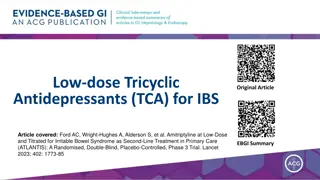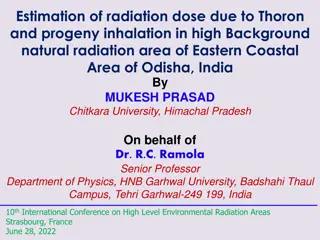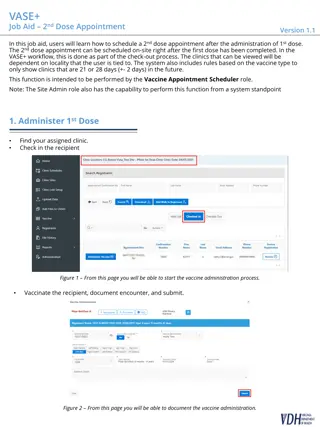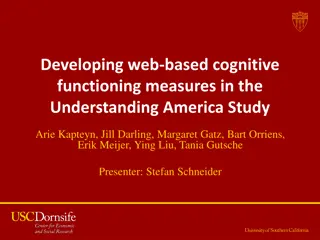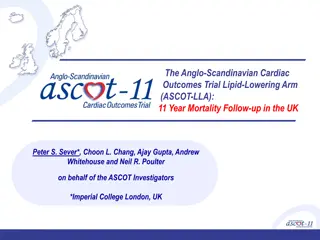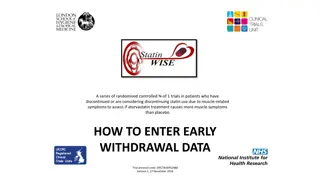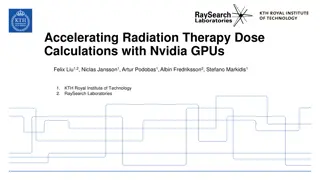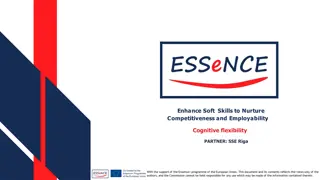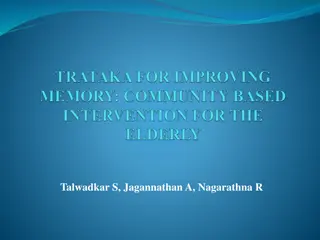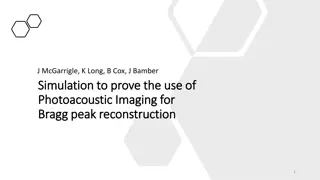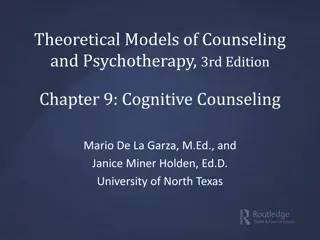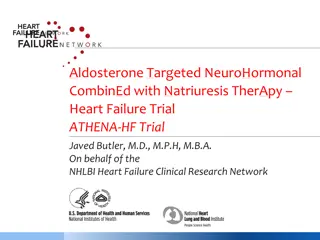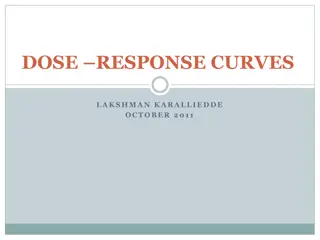Effect of High-Dose Atorvastatin on Cognitive Function
This study investigates the impact of high-dose atorvastatin on neural activity and cognitive function through a randomized clinical trial, utilizing neuropsychological assessments and fMRI tasks. Participants underwent cognitive testing after 6 months of treatment and again after a 2-month cessation period. Various neuropsychological measurements were used to evaluate auditory and visual memory, general cognitive function, manual dexterity, attention, reasoning, executive functioning, and more.
Download Presentation

Please find below an Image/Link to download the presentation.
The content on the website is provided AS IS for your information and personal use only. It may not be sold, licensed, or shared on other websites without obtaining consent from the author.If you encounter any issues during the download, it is possible that the publisher has removed the file from their server.
You are allowed to download the files provided on this website for personal or commercial use, subject to the condition that they are used lawfully. All files are the property of their respective owners.
The content on the website is provided AS IS for your information and personal use only. It may not be sold, licensed, or shared on other websites without obtaining consent from the author.
E N D
Presentation Transcript
The Effect of High-Dose Atorvastatin on Neural Activity and Cognitive Function Beth A. Taylor, Ph.D. Director, Exercise Physiology Research, Department of Cardiology, Hartford Hospital Associate Professor, Department of Kinesiology, University of Connecticut
Background Mild CNS complaints second most commonly reported adverse effect of statin drugs 2012 FDA safety label change Study findings inconclusive Observational studies prone to prescription bias Traditional cognitive tests yield small effect sizes
Purpose To assess the effect of statins on cognition in a randomized clinical trial Battery of standard neuropsychological assessments Cognitive Failures Questionnaire (CFQ) Neural activation with functional magnetic resonance imaging (fMRI) during two tasks Visual Figural Memory task and a verbal Sternberg Working Memory task. Broadbent et al. 1982; Beason-Held et al. 2005; Sternberg et al. 1966
Study Design Participants aged 20 yr recruited from an ongoing RCT Effect of Statins On Skeletal Muscle Performance (STOMP); NCT00609063 Designed to assess the incidence of muscle side-effects in 420 healthy, statin- na ve adults treated with 80 mg atorvastatin or placebo daily for 6 months Study Design (B A Order) Cognitive testing after 6 months on treatment Paper-based neuropsychological tests and functional magnetic resonance imaging (fMRI) Tests repeated after the participants ceased treatment for two months Blood lipids measured at both timepoints Thompson et al. 2010; Parker et al. 2013
Neuropsychological Measurements Hopkins Verbal Learning Test-Revised (HVLT-R; auditory memory) Brief Visuospatial Memory Test-Revised (BVMT-R; visual memory) Symbol Digit Modalities Test (SDMT; general cognitive function and neurological impairment) Lafayette Grooved Pegboard (manual dexterity) Stroop Color-Word and Trail-Making Tests (attention, reasoning and executive functioning) Wechsler Adult Intelligence Scale III: Total and Reliable Digit Span (working memory) 18-point Clock Test (mild cognitive impairment) Cognitive Failures Questionnaire (CFQ; self-reported failures in perception, memory, and motor function)
Functional MRI Tests The Figural Memory task: visual encoding and recognition paradigm that consistently activates medial temporal, cingulate, inferior frontal, and posterior parietal brain regions Encoding: memorization of black abstract line drawings Recognition: Recognition of 20 target and 20 similar -appearing distractor stimuli The Verbal Working Memory task: reliable activation of dorsolateral prefrontal, anterior cingulate, posterior parietal, and subcortical brain regions Encoding: Memorization of 2, 4 and 6 sets of consonants Maintenance: 12 seconds of rest Retrieval Phase: 18 trials with half target and half distractor Blood oxygen level dependent (BOLD) response modeled for behavioral events, covarying for motion and linear trends, controlling for age and sex Cox et al. 2016; Dager et al. 2014; Meda et al. 2008
Neuropsychological Test Scores Minimal effects Both groups: HVLT-R scores for total and delayed recall improved with drug cessation (p=0.01 and 0.04) Placebo group: Stroop Color-Word score increased(p<0.01) and 18- Point Clock Test score decreased (p=0.02) with drug cessation No difference in CFQ scores (all p > 0.10) by total score, frequency of score or domain (memory, distractibility, blunders, and names)
Figural Memory Task Participants were excluded from fMRI analysis if they did not have complete scans at both timepoints due to significant motion artifact, invalid behavioral responses, or inability to complete in-scanner testing Sample size of 77 participants (42 placebo, 35 atorvastatin) Group x time interaction in bilateral paracentral lobule/precuneus during the encoding phase Participants on atorvastatin had more BOLD response than participants on placebo while on treatment (F(1,73) = 8.06, p=.006), but less BOLD response than patients in the placebo group after the treatment washout period (F(1,73) = 11.82, p=.001) Neither group showed a significant change in BOLD response between scans (Atorvastatin: F(1,32) = 0.11, p=.747), Placebo: F(1,39) = 0.05, p=.826)) No group x time effects on neural response during recognition hits or on any behavioral data from the task (all p >0.68)
Neural Activation During Figural Memory Task: Group-Time Interaction
Sternberg Task Sample size of 120 participants (68 on placebo, 52 on atorvastatin) Group x time interaction in the right putamen extending into the right globus pallidus during the maintenance phase Participants on atorvastatin had less BOLD response compared to participants on placebo while on treatment (F(1,116) = 8.30, p=.005), but after the treatment washout, participants in the atorvastatin group had more BOLD response than participants in the placebo group (F(1,116) = 12.84, p<.001). The atorvastatin group also showed a trend toward an increase in BOLD response between scans (F(1,49) = 3.78, p=.055), whereas the placebo group showed no change in BOLD response over time (F(1,65) = 0.95, p=.33). There were no group x time effects during the encoding phase or the retrieval phase, no parametric effects of increasing memory load during any phase, and no group x time effects on any behavioral data from the task (all p >0.16).
Neural Activation During Verbal Working Memory Task: Group-Time interaction
Discussion Few changes standardized neuropsychological tests, a finding similar to those from large clinical trials Meta-analysis of 14 studies with 27,643 participants Case reports of memory decrements with statin therapy continue to be published Patients report cognitive side effects as a leading cause of statin intolerance Nocebo effect? Methodological issues (small effect sizes, learning/practice effects) Ott et al. 2015; Suraweera et al. 2016; Lakey et al. 2016
Discussion and Conclusions Study is the first to investigate the effects of statins on the CNS with fMRI No convincing evidence of measurable verbal or nonverbal memory dysfunction due to statin medications Most regional networks activated similarly by both groups Participants on atorvastatin demonstrated small but significant altered patterns of regional neural activation on vs. off statin compared to participants treated with placebo Treatment groups differed at both timepoints Clinical implications of these findings are unclear and warrant additional clinical trials Occasional reports of memory loss and confusion?
Acknowledgements Hartford Hospital: Paul D. Thompson, C. Michael White, Gregory Panza, Amanda Zaleski, Donna M. Polk Olin MRI: Godfrey Pearlson , Alecia Dager, Shashwath Meda, Gregory Book Data Safety Monitoring Board: JoAnne Foody, Pamela Hartigan, and Ira Ockene The STOMP parent study: National Heart, Lung, and Blood Institute/National Institutes of Health grant RO1 HL081893 (Dr. Thompson) The STOMP ancillary cognitive study: National Heart, Lung, and Blood Institute/National Institutes of Health grant NHLBI 1R01HL098085 (Drs. Taylor and Polk)





